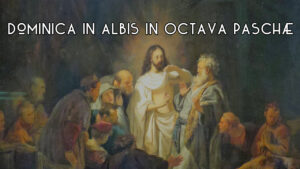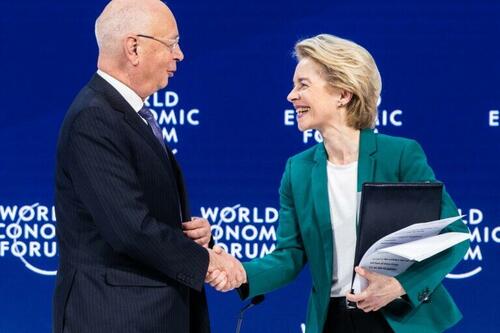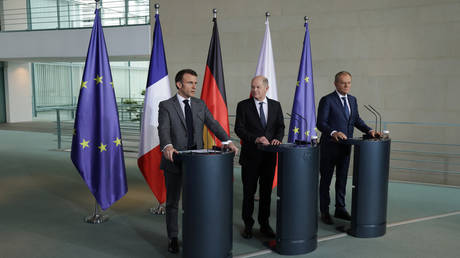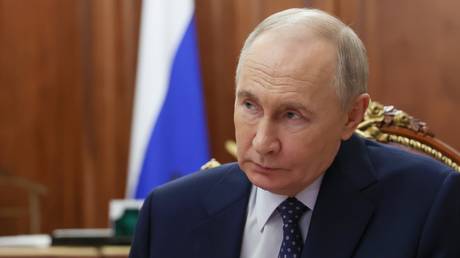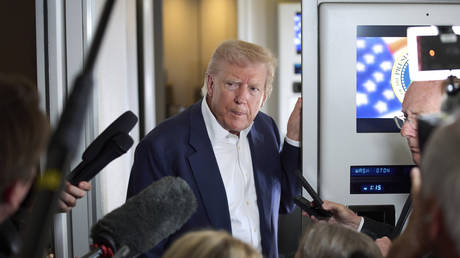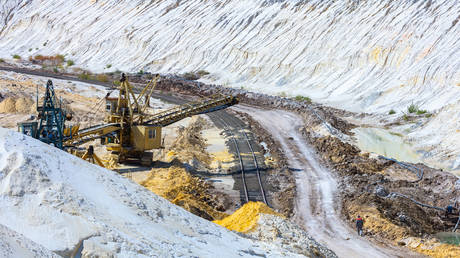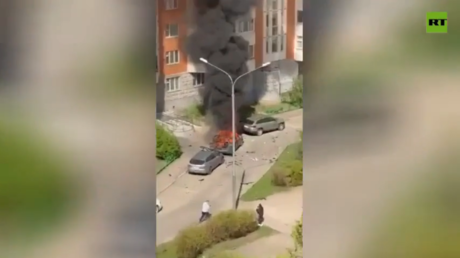Inside This Week's Bull Bear Report
- How Being Like Spock Can Help You Win The Investing Game
- How We Are Trading It
- Research Report - Speculator Vs Investor
- YouTube - Before The Bell
- Market Statistics
- Stock Screens
- Portfolio Trades This Week
Market Finds Some Hope
Last week, we discussed the issue with the spat between President Trump and the Federal Reserve chairman, Jerome Powell. As noted then:
"While the markets await the next Federal Reserve meeting, the uncertainty over monetary policy weighs on markets as much as the uncertainty about tariffs. This past week, the market reversed some of its gains from the massive "tariff reprieve" surge. With the MACD back on a buy signal and money flows turning positive, buyers are tepidly stepping back into the market. The 20-DMA continues to act as overhead resistance, defining the current downtrend. While there is undoubtedly a risk of another test of recent lows, which should be expected and why caution remains advisable, a break above the 20-DMA would lead to a rally to the 50-DMA. (Monday's article addressed the "Death Cross" and what it means for investors.)"
The market rallied above the 20-DMA this past week as investors found some "silver linings" to the ongoing tariff dispute. Despite China saying "no negotiations" had started with the U.S., comments from both President Trump and Scott Bessent suggested that the Administration would "be nice" to China and that a "very good deal" could be done between the two countries. As we have noted previously, given the more extreme oversold condition of the market, any "good news" would allow investors to push stocks higher.
As stated, the market cleared initial resistance at the 20-DMA, but there is a heavy band of resistance just ahead at the level where the market was trying to bottom ahead of the tariff announcements. Just above that is the confluence of the 50- and 200-DMAs. While markets are not overbought yet, sellers will likely re-emerge if the market pushes further into those resistance levels. As we have suggested over the last two weeks, we are likely in for a rather protracted consolidation action as the market digests ongoing trade negotiations, slower economic growth, and reduced earnings expectations. Therefore, we should expect continued pullbacks and rallies until the market resolves the seller imbalances.

What is very interesting about the recent market decline is that while professional and "older investors," who are presumably more experienced, are very "bearish" about their investment outlook, retail investors have been "buying the dip" at the most on record going back to early 2023.

However, while you may shake your head in disbelief, buying markets when they are down has been an essentially winning strategy for dip buyers over the last decade. Of course, such should be unsurprising given repeated rounds of monetary and fiscal interventions. As previously discussed, the Fed has engendered an entire generation of young investors with a sense of "moral hazard." To wit:
"From a market perspective, the liquidity flows from the Federal Reserve increased speculative appetites and investors piled into “zombies” with reckless abandon. Why? Because of a lack of incentive to guard against risk as investors believe the Fed is protecting them from the consequences of risk. In other words, the Fed has “insured them” against potential losses."

Will this time be different? Maybe. There will be a point where taking on excessive speculative risk in leveraged ETFs and options leads to poor outcomes. However, that may not be today. As such, we need to be mindful that buyers and sellers drive markets. Until the markets change investors' speculative attitudes, we will likely continue to find support in markets even though we may think there shouldn't be.
Such is the message of today's discussion: learning to be "unemotional" when managing our money.
Need Help With Your Investing Strategy?
Are you looking for complete financial, insurance, and estate planning? Need a risk-managed portfolio management strategy to grow and protect your savings? Whatever your needs are, we are here to help.

Spock And The Vulcan Approach To Investing
In "Is Risk Off Positioning Signaling A Market Low," we discussed the extremely oversold market conditions that are beginning to suggest the market may be approaching a near-term low. That analysis was based on various indicators, including extremely negative investor sentiment, positioning, and technical oversold conditions. As we stated, the current market environment is much like 2022. The first chart below shows the 2022 market correction versus 2025. The rally that began this past week could certainly rally further. Still, as we have warned, any rally in the near term will likely be met with sellers until there is a resolution on tariffs, monetary policy, and more certainty around recession risks.

The following chart compares our weekly Technical Composite Index. You will note that the market bounced or bottomed when the technical composite reached below 20.

The current conundrum is whether the extremely low technical readings preceding this week's rally were a technical bounce or a market bottom. Unfortunately, we won't know until after the fact. Still, our gut instinct suggests that given the depth of the decline and the technical damage to the market overall, any significant bounce will be met with sellers. Historically, the first market low during a correction phase is not usually a bottom. Regardless, the market continues to follow the 2022 playbook closely this year, but I would not expect the rest of the year to be an exact match.
The optimistic view is that while there are never any guarantees when it comes to investing, history suggests that after such a volatile period, we tend to perform better in the future, barring the onset of a recession or credit-related event. The bad news is that these increases in volatility tend to lead investors to make many emotionally driven investment mistakes. We rationalize, try to avoid losses, fail to take action when needed, or take action when we shouldn't—all driven by our emotions. Yet being unemotional about your money is crucial to long-term investment outcomes.
As Howard Marks once stated:
“If I ask you what’s the risk in investing, you would answer the risk of losing money. But there actually are two risks in investing: One is to lose money, and the other is to miss an opportunity.
You can eliminate either one, but you can’t eliminate both at the same time.
So the question is how you’re going to position yourself versus these two risks: straight down the middle, more aggressive or more defensive.
I think of it like a comedy movie where a guy is considering some activity. On his right shoulder is sitting an angel in a white robe. He says: ‘No, don’t do it! It’s not prudent, it’s not a good idea, it’s not proper and you’ll get in trouble’.
On the other shoulder is the devil in a red robe with his pitchfork. He whispers: ‘Do it, you’ll get rich’. In the end, the devil usually wins.
Caution, maturity and doing the right thing are old-fashioned ideas. And when they do battle against the desire to get rich, other than in panic times the desire to get rich usually wins. That’s why bubbles are created and frauds like Bernie Madoff get money.
How do you avoid getting trapped by the devil?
I’ve been in this business for over forty-five years now, so I’ve had a lot of experience. In addition, I am not a very emotional person. In fact, almost all the great investors I know are unemotional. If you’re emotional then you’ll buy at the top when everybody is euphoric and prices are high. Also, you’ll sell at the bottom when everybody is depressed and prices are low. You’ll be like everybody else and you will always do the wrong thing at the extremes.
Therefore, unemotionalism is one of the most important criteria for being a successful investor. And if you can’t be unemotional you should not invest your own money, period. Most great investors practice something called contrarianism. It consists of doing the right thing at the extremes which is the contrary of what everybody else is doing. So unemtionalism is one of the basic requirements for contrarianism.”
If you didn't read that quote carefully, I would reread it.
During periods of market volatility, investors often let emotions drive decisions. However, the investors who perform best under pressure tend to think less like adrenaline-fueled traders and more like Spock from Star Trek. Emotionless, logical, and consistent, Spock's mindset offers guidance for navigating turbulent markets. As he once said, “Insufficient facts always invite danger.” That mindset is exactly what investors need when fear or greed threaten sound decision-making. Here are some points to consider.
Emotion Is The Enemy of Reason
Market volatility heightens stress, which in turn amplifies emotional responses. As a result, investors often chase rallies or panic-sell during drawdowns. Spock’s detachment offers a counterpoint.
“When you eliminate the impossible, whatever remains, however improbable, must be the truth.”
Investing means cutting through noise, avoiding speculation, and relying on data. For example, the media is jammed with emotionally charged headlines about tariff-induced trade wars, recessions, and de-dollarization. In reality, those events rarely occur. As we discussed in "Probabilities vs Possibilities:"
"The chart below is a normally distributed “bell curve” of potential events and outcomes. In simple terms, 68.26% of the time, typical outcomes occur. Economically speaking, such would be a normal recession or the avoidance of a recession. 95.44% of the time, we are most likely dealing with a range of outcomes between a reasonably deep recession and standard economic growth rates. However, there is a 2.14% chance that we could see another economic crisis like the 2008 Financial Crisis. But what about “economic armageddon?” That event where nothing matters but “gold, beanie weenies, and bunker.” That is a 0.14% possibility."

This concept of possibilities versus possibilities is crucial to navigating investment outcomes. Spock never claimed to predict the future. Instead, he calculated the probabilities of potential outcomes. That approach mirrors sound portfolio management. Rather than trying to guess what markets will do tomorrow, successful investors assess various outcomes and plan accordingly. As Spock once stated
“Change is the essential process of all existence.”
In other words, if your current reaction to recent market volatility is to expect it to continue indefinitely, you will likely be disappointed. This is why we continually suggest managing risk, rebalancing, taking profits, and focusing on allocations. Building portfolios that account for downside risks, multiple economic scenarios, and margin of safety allows investors to remain calm when markets shift. The only thing investors need to fear is fear itself.
Emotional decisions typically underperform disciplined ones. Investors can’t eliminate volatility, but can control their reactions to it. Behavioral finance confirms this. Loss aversion, herd behavior, and recency bias drive many of the worst investment decisions.
Reacting emotionally to short-term moves often destroys long-term returns. Spock’s strength was never his speed, but his steadiness.
“Logic is the beginning of wisdom, not the end.”
The ability to step back, re-evaluate with clarity, and follow a predetermined investment process keeps portfolios aligned with goals. Legendary investor Charlie Munger confirmed this view when he stated:
“The big money is not in the buying and selling, but in the waiting.”
Patience is a strategic advantage. During volatile markets, as we have currently, it is crucial to step back and focus on the broad performance of the portfolio relative to your goals. A disciplined approach before volatility sets in is the key to navigating outcomes. Spock’s analytical mindset lends itself to rigorous risk assessment. He didn’t avoid danger; he quantified and prepared for it. Likewise, investors must separate perceived risk from actual risk. Volatility may feel like danger, but it is often simply price movement around a trend. Actual risk lies in permanent capital loss, overconcentration, or misalignment with one’s time horizon and objectives.
As we discussed previously, volatility begets volatility. Periods of low volatility always lead to high volatility, like now. However, the opposite is also true. The trick is navigating the periods of high volatility well enough to participate in the extended periods of low volatility.

Ray Dalio, founder of Bridgewater Associates, advocates for a similar analytical approach to risk:
“If you’re not worried, you need to worry. And if you’re worried, you don’t need to worry.”
In other words, constant vigilance and preparation are more productive than panic. Investing during periods of uncertainty can be dangerous; however, there are some steps to take when investing in uncertain markets.
- Have excess emergency savings, so you are not “forced” to sell during a market decline to meet obligations.
- Extend your time horizon to 5-7 years, as short-term stresses can take time to resolve.
- Don’t obsessively check your portfolio.
- Consider tax-loss harvesting (selling stocks at a loss) to offset those losses against future gains.
- Stick to your investing discipline regardless of what happens.
Spock would agree.
Emotions Cloud Opportunity Recognition
Lastly, one overlooked cost of emotional investing is the inability to recognize opportunity during downturns. As Spock once said:
“Fear is the enemy. It is the great destroyer of logic.”
One mistake that investors make when volatility strikes is to assume that since the market is going down, EVERYTHING is going down simultaneously. That is rarely the case.
"The first law of thermodynamics states that, when energy passes into or out of a system (as work, heat, or matter), the system's internal energy changes in accordance with the law of conservation of energy. This also results in the observation that, in an externally isolated system, even with internal changes, the sum of all forms of energy must remain constant, as energy cannot be created or destroyed."
In the financial markets, money is not created or destroyed; it merely changes form. As the old Wall Street adage states, "There is always a bull market somewhere." In other words, as capital is extracted from one asset, that capital is reinvested into another asset. Eventually, that same flow of capital will reverse, and the asset that rose previously will become a source of liquidity to return to what was sold off. A good recent example of this is Gold versus the S&P 500 index. As shown, there is a very high negative correlation between the 36-month rate of change of the two assets. Simply put, when one rises, it becomes a source of liquidity for the falling asset.

This doesn't mean that one asset is good or the other is bad, it just means that money is changing form.
Crucially, when volatility strikes, prices disconnect from fundamentals. Investors with emotional discipline can identify undervalued assets while others flee. Such is why the best buying opportunities occur during maximum pessimism, but few are brave or logical enough to act. As Warren Buffett put it plainly:
“Be fearful when others are greedy, and greedy when others are fearful.”
That kind of contrarian thinking requires emotional restraint. Spock would likely view investor sentiment as a signal to be observed and discounted, not followed.
Conclusion: Adopt A Vulcan Framework
As an investor, you can take a page from Spock’s playbook and approach volatility not as a crisis but as a condition. Here are some basic steps:
- Rely on process, not prediction;
- Focus on probabilities, not possibilities.
- Discount possibilities that fall well outside historical norms.
- Question assumptions, most importantly your own.
- Suppress reactive behavior,
- Manage risk with calm precision.
In short, do what great investors have always done: stick to a disciplined, rational approach while others lose their heads.
I realize that you are not a Vulcan and are not afforded the luxury of being raised to be devoid of emotions. Fortunately, you don’t need to be Vulcan to benefit from the mindset. But you do need to recognize that emotions, while natural, often do more harm than good in investing. So while the market has declined this year, and headlines are screaming panic, remember Spock’s most crucial wisdom:
“Live long and prosper.”
That’s the goal, after all.
How We Are Trading It
We continue to manage our portfolios with an above-normal level of caution. On Friday, we added to our short-market hedge and slightly increased the duration of our bond portfolio as the "basis trade" crisis we discussed two weeks ago seems to be under control. However, that risk is not entirely over.
As noted above, there is a tremendous amount of risk ahead, and as we approach those levels, there will be a large supply of stock for sale. While we don't expect the market to crater to new lows, unless there is another tariff or trade shock, and a surge in recessionary data, a retest of recent lows would be unsurprising. As such, we are carrying an overweight position in cash and reduced equity allocations for now. We will likely reduce equity allocations a bit further next week.
Our primary goal is to "survive" the correction phase so that we are in a strong position to benefit from stronger equity markets. While we run various portfolio models, the most popular model is the 60/40 allocation, which is slightly positive for the year, while the S&P 500 is down 6%. Yes, the portfolio is down from its peak, which should be expected given the drag from equities, but managing risk, taking profits, and rebalancing allocations has kept volatility largely suppressed. (You can view the model and its holdings at SimpleVisor.com)

It is worth noting that the market is back to overbought on a very short-term basis. While markets can stay overbought for some time, we are likely getting closer to the point where "trapped longs" will look for an opportunity to exit. If you have not already done so, next week will likely be a good opportunity to begin rebalancing risk, increasing cash levels, and adding hedges.
(Note: The allocation below contains a 3.5% short S&P 500 position in the ETF allocation.)

Feel free to reach out if you want to navigate these uncertain waters with expert guidance. Our team specializes in helping clients make informed decisions in today’s volatile markets.
Research Report

Subscribe To “Before The Bell” For Daily Trading Updates
We have set up a separate channel JUST for our short daily market updates. Please subscribe to THIS CHANNEL to receive daily notifications before the market opens.
Click Here And Then Click The SUBSCRIBE Button
https://www.youtube.com/watch?v=4rNTkRz7B0w
Subscribe To Our YouTube Channel To Get Notified Of All Our Videos
Bull Bear Report Market Statistics & Screens

SimpleVisor Top & Bottom Performers By Sector

S&P 500 Weekly Tear Sheet

Relative Performance Analysis
As we stated last week, "While risk is subsiding in the near term, there is a lack of a catalyst to move stocks higher. Some good news on the tariff front or better-than-expected earnings over the next two weeks could provide relief. However, by the end of the month, stock buybacks return, which will give some support to equities headed into May."
That good news came this past week, along with "not-as-bad-as-expected" earnings announcements, which supported last week's rally. That support could continue into the end of the month, with the stock buyback window opening after next week's earnings from MSFT, AAPL, and AMZN. However, as noted in the discussion above, many investors are trapped in the recent selloff looking for an exit, and with markets short-term overbought (lower left panel), a return of selling pressure will be unsurprising. Trade accordingly.

Technical Composite
The technical overbought/sold gauge comprises several price indicators (R.S.I., Williams %R, etc.), measured using “weekly” closing price data. Readings above “80” are considered overbought, and below “20” are oversold. The market peaks when those readings are 80 or above, suggesting prudent profit-taking and risk management. The best buying opportunities exist when those readings are 20 or below.
The current reading is 38.76 out of a possible 100.

Portfolio Positioning “Fear / Greed” Gauge
The “Fear/Greed” gauge is how individual and professional investors are “positioning” themselves in the market based on their equity exposure. From a contrarian position, the higher the allocation to equities, the more likely the market is closer to a correction than not. The gauge uses weekly closing data.
NOTE: The Fear/Greed Index measures risk from 0 to 100. It is a rarity that it reaches levels above 90.
The current reading is 42.79 out of a possible 100.

Relative Sector Analysis

Most Oversold Sector Analysis

Sector Model Analysis & Risk Ranges
How To Read This Table
- The table compares the relative performance of each sector and market to the S&P 500 index.
- “MA XVER” (Moving Average Crossover) is determined by the short-term weekly moving average crossing positively or negatively with the long-term weekly moving average.
- The risk range is a function of the month-end closing price and the “beta” of the sector or market. (Ranges reset on the 1st of each month)
- The table shows the price deviation above and below the weekly moving averages.
As noted last week, the rally this past week was unsurprising given the large number of markets and sectors trading well below the monthly risk ranges. However, given that most markets and sectors are trading with "bearish" crossovers, the correction process has likely not ended. Historically, when most markets and sectors are trading in bearish trends, the correction process is more entrenched and lasts longer than normal market pullbacks. As such, continue to manage risk exposures, take profits in overbought and deviated sectors, and look for opportunities forming in deeply beaten-up areas. Gold started a correction this past week, but remains exceedingly overbought and deviated from long-term averages.

Weekly SimpleVisor Stock Screens
We provide three stock screens each week from SimpleVisor.
This week, we are searching for the Top 20:
- Relative Strength Stocks
- Momentum Stocks
- Technical Strength W/ Dividends
(Click Images To Enlarge)
RSI Screen

Momentum Screen

Technically Strong With Dividends

SimpleVisor Portfolio Changes
We post all of our portfolio changes as they occur at SimpleVisor:
Apr 25th
"As discussed previously, we continue using counter-trend rallies in the market to reduce risk, hedge, and rebalance exposures. In both models, we are using the bond sell-off, now that the “basis trade” seems to be calming down, to shift 2% of the portfolio in 3-7 Treasury Holdings (IEI) back into Extended Duration Bond (EDV). Also, we add 1% of the portfolio to our current short S&P 500 (SH) holding in both models.
IMPORTANT NOTE: We manage an IRA account for our models, so we don’t have to worry about tax issues. If trading in a taxable account, use TLT rather than EDV to avoid negating the tax loss benefit."
Equity Model
- Sell 2% of IEF and add 2% of the portfolio into EDV
- Add 1% of the portfolio to SH
ETF Model
- Sell 2% of IEF and add 2% of the portfolio into EDV
- Add 1% of the portfolio to SH
Lance Roberts, C.I.O., RIA Advisors
The post Spock And The Logic Based Approach To Volatility appeared first on RIA.

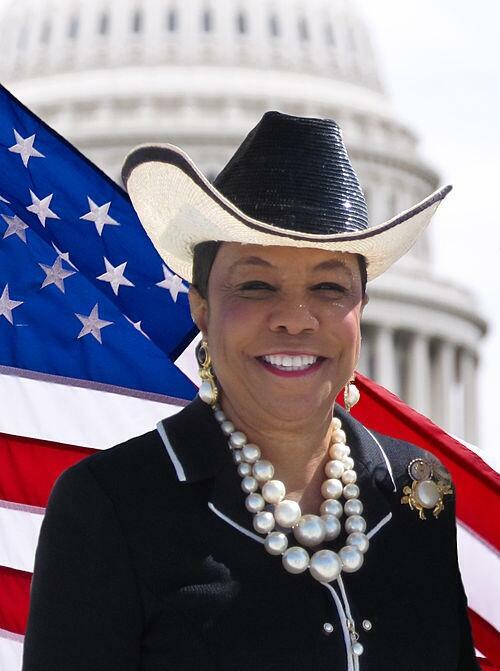

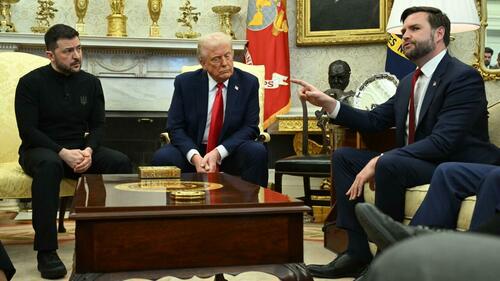



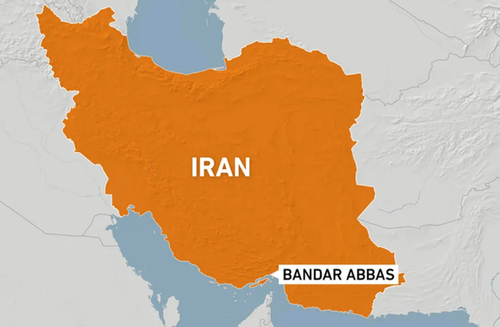
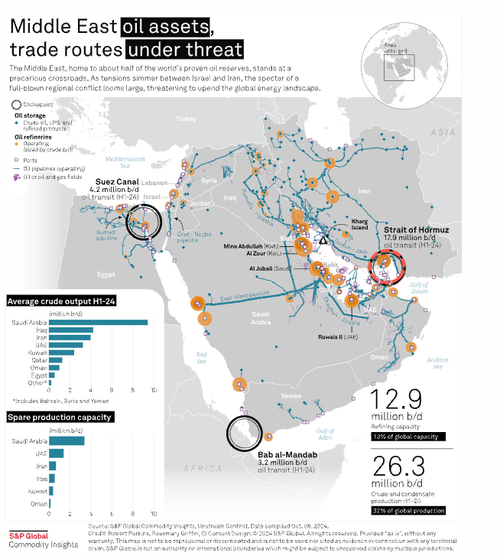
 Caroline Perkins, ChurchPOP
Caroline Perkins, ChurchPOP Caroline Perkins, ChurchPOP
Caroline Perkins, ChurchPOP Caroline Perkins, ChurchPOP
Caroline Perkins, ChurchPOP Caroline Perkins, ChurchPOP
Caroline Perkins, ChurchPOP Caroline Perkins, ChurchPOP
Caroline Perkins, ChurchPOP Caroline Perkins, ChurchPOP
Caroline Perkins, ChurchPOP Caroline Perkins, ChurchPOP
Caroline Perkins, ChurchPOP Caroline Perkins, ChurchPOP
Caroline Perkins, ChurchPOP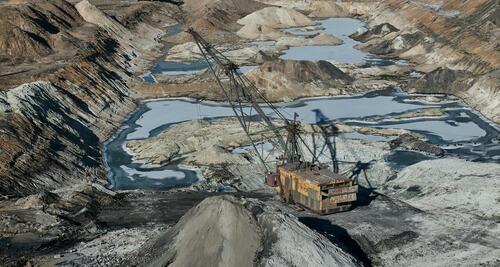 Getty Images
Getty Images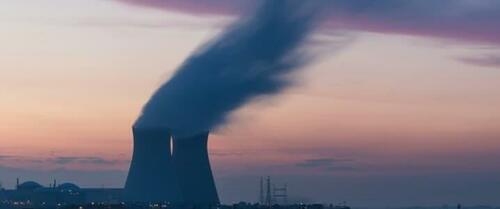

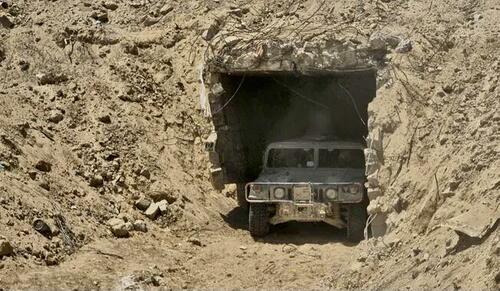 Last August, the Israeli Defense Forces distributed this photo and claimed it depicted a Hamas smuggling tunnel along Gaza's Egyptian border (IDF Spokesperson's Unit)
Last August, the Israeli Defense Forces distributed this photo and claimed it depicted a Hamas smuggling tunnel along Gaza's Egyptian border (IDF Spokesperson's Unit)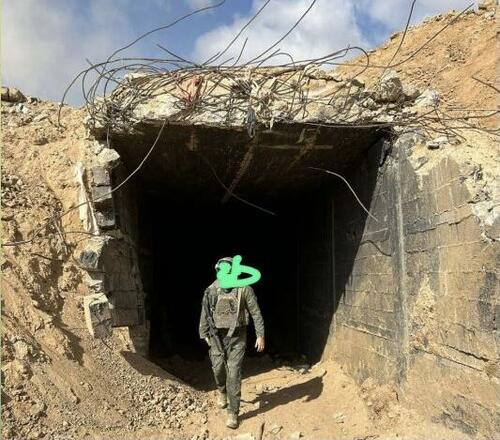 The supposed smuggling tunnel viewed from a different angle (Telegram via
The supposed smuggling tunnel viewed from a different angle (Telegram via 